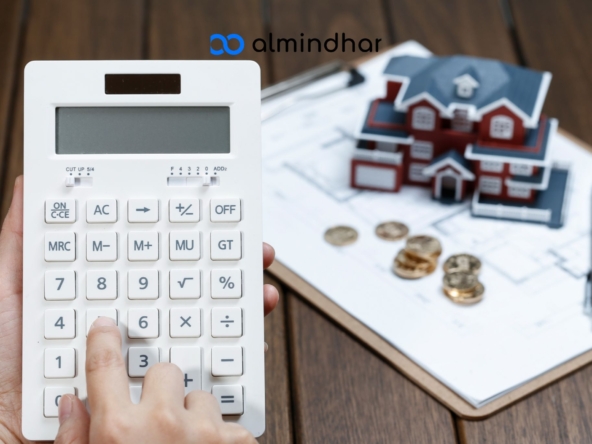When it comes to real estate transactions, property diagnostics play a crucial role. These assessments enable involved parties to make informed decisions regarding the purchase, sale, or rental of a property. In this article, Almindhar extensively explores the various types of property diagnostics, their objectives, and their significance within the real estate sector.
- I-Maximizing Understanding of Energy Efficiency: The Energy Performance Certificate (EPC)
- II-Ensuring Safety: Asbestos Inspection
- III-Gas Safety: Essential Inspection for Installations Over 15 Years Old
- IV-Electrical Reliability: The Condition of the Internal Electrical Installation
- V-Transparency in Transactions: The Carrez Law Measurement for Condominium Properties
- VI-Environmental Sanitation: Essential Assessment for Properties Not Connected to the Sewer System
- VII-Conclusion
I-Maximizing Understanding of Energy Efficiency: The Energy Performance Certificate (EPC)
The Energy Performance Certificate (EPC) represents a critical assessment of a building’s energy efficiency, denoted by a rating from A to G. This evaluation provides valuable insights for potential buyers regarding energy consumption and associated greenhouse gas emissions linked to the property. By assigning a rating, the EPC offers a clear view of its relative energy performance, empowering involved parties to make informed decisions. This tool goes beyond indicating electricity consumption, providing a holistic perspective on the property’s environmental impact, fostering awareness and responsible choices within the real estate sector.
II-Ensuring Safety: Asbestos Inspection
The asbestos inspection, mandatory for properties constructed before 1997, aims to identify any potential traces of asbestos within construction materials. This measure, vital for safety, aligns with a preventive approach, ensuring the protection of occupants and individuals working on the property. By highlighting potential asbestos presence, this assessment facilitates the implementation of appropriate measures to mitigate risks associated with this hazardous substance. Consequently, it significantly contributes to the overall safety of the premises in accordance with prevailing standards and regulations.
III-Gas Safety: Essential Inspection for Installations Over 15 Years Old
The gas inspection, a requirement for installations over 15 years old, aims to assess the compliance of gas equipment. Its primary objective is to prevent potential domestic accidents resulting from failures in gas installations. By meticulously inspecting the equipment, this assessment ensures that all required safety standards are met, thereby minimizing risks associated with potential malfunctions. By ensuring the reliability of installations, it contributes not only to the safety of occupants but also to the preservation of the entire property. This proactive process plays a crucial role in preventing gas-related incidents, promoting safe living conditions that adhere to standards.

IV-Electrical Reliability: The Condition of the Internal Electrical Installation
The electrical inspection, also referred to as the condition of the internal electrical installation, is a mandatory step for homes aged over 15 years. Its paramount role lies in evaluating the compliance of electrical installations to minimize fire risks. Through a detailed inspection, this assessment ensures adherence to electrical safety standards, providing peace of mind to occupants and averting potential hazardous situations. As a preventive measure, it contributes to maintaining a safe residential environment and preserving the integrity of real estate, highlighting its crucial role in overall home safety.
V-Transparency in Transactions: The Carrez Law Measurement for Condominium Properties
The Carrez measurement, specific to properties within condominiums, involves accurately measuring the private area of a unit. Its primary objective is to ensure transparency in real estate transactions and prevent potential disputes regarding the true surface area of the property. By establishing a uniform standard for measuring private spaces, the Carrez measurement provides an objective and standardized basis, thereby facilitating exchanges between involved parties. This process aims to instill confidence by offering precise information about the actual surface area of the condominium property, reducing the risks of misunderstandings and legal conflicts. In essence, the Carrez measurement plays a crucial role in promoting fair and transparent real estate transactions within condominiums.
VI-Environmental Sanitation: Essential Assessment for Properties Not Connected to the Sewer System
The sanitation inspection, mandatory for properties not connected to the main sewer system, aims to assess the proper functioning of individual sanitation facilities. Its primary objective is to prevent potential environmental risks associated with potential soil pollution. By carefully inspecting the sanitation systems unique to each property, this assessment ensures these systems operate effectively, thereby limiting the risk of pollutants being discharged into the soil. By contributing to the preservation of the local environment, it plays an essential role in protecting natural resources and preventing soil quality degradation, ensuring the sustainability of real estate practices.

VII-Conclusion
In conclusion, property diagnostics play an essential role in the process of buying, selling, or renting a property. Each of these assessments adheres to specific standards aimed at ensuring occupant safety, informing stakeholders, and preventing potential disputes. As indispensable elements of the real estate sector, these evaluations contribute to transparent and responsible property transactions.



